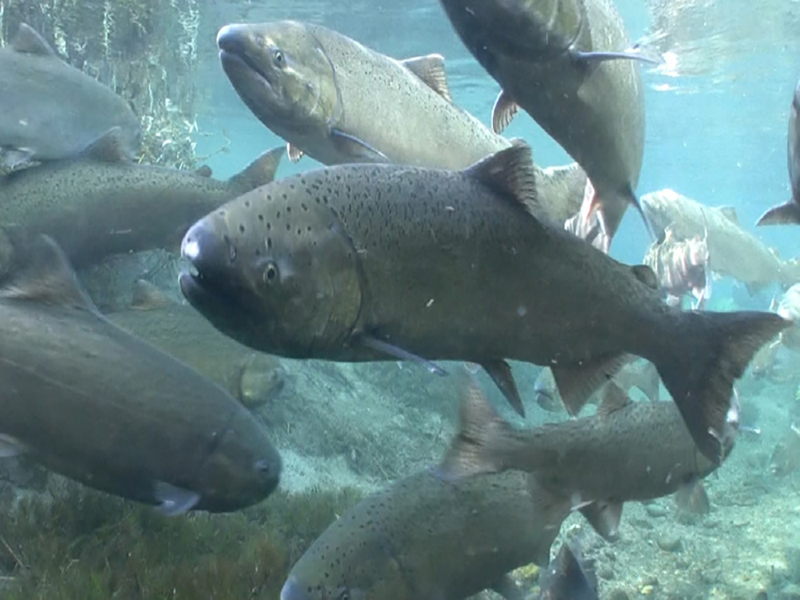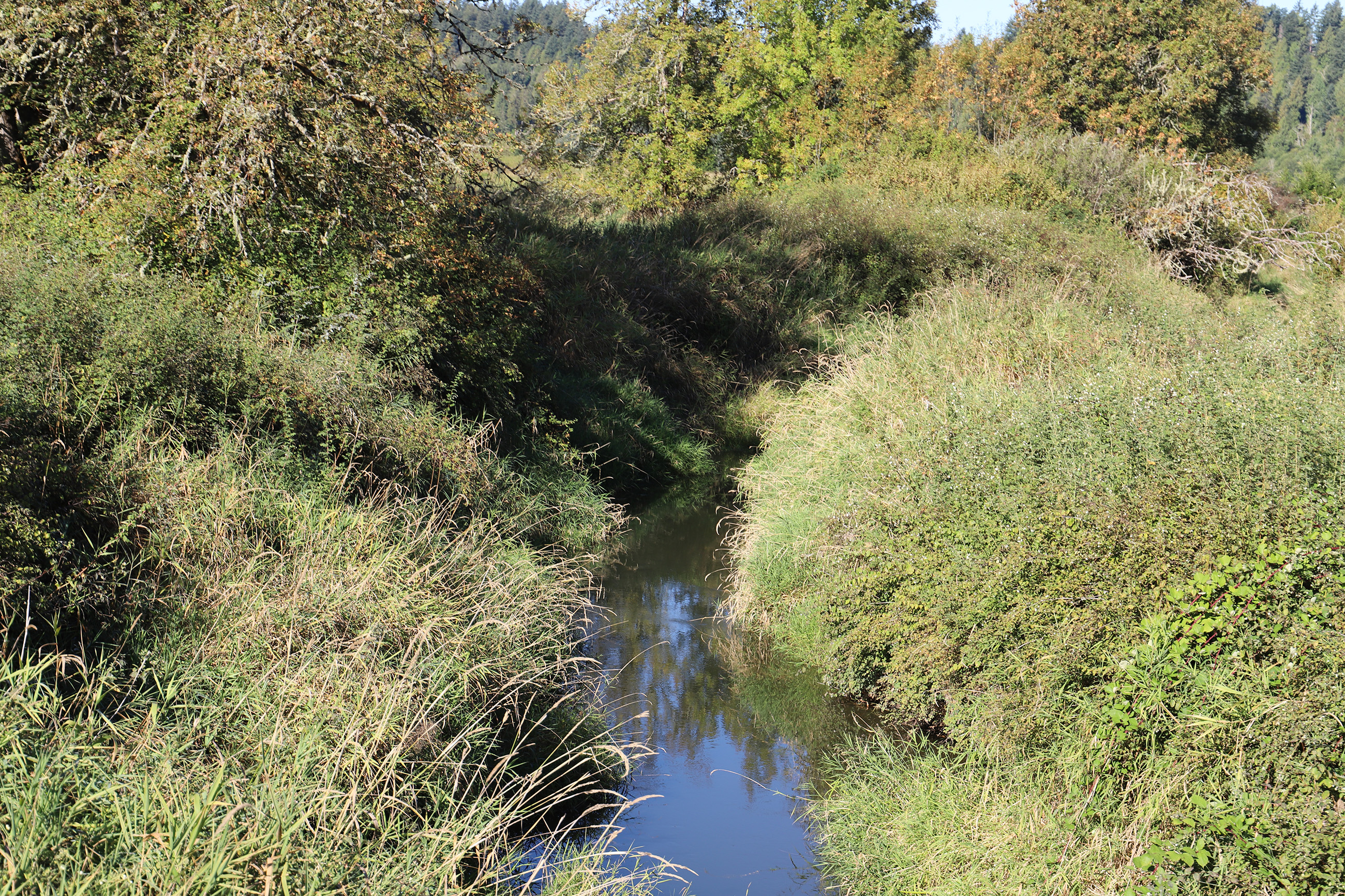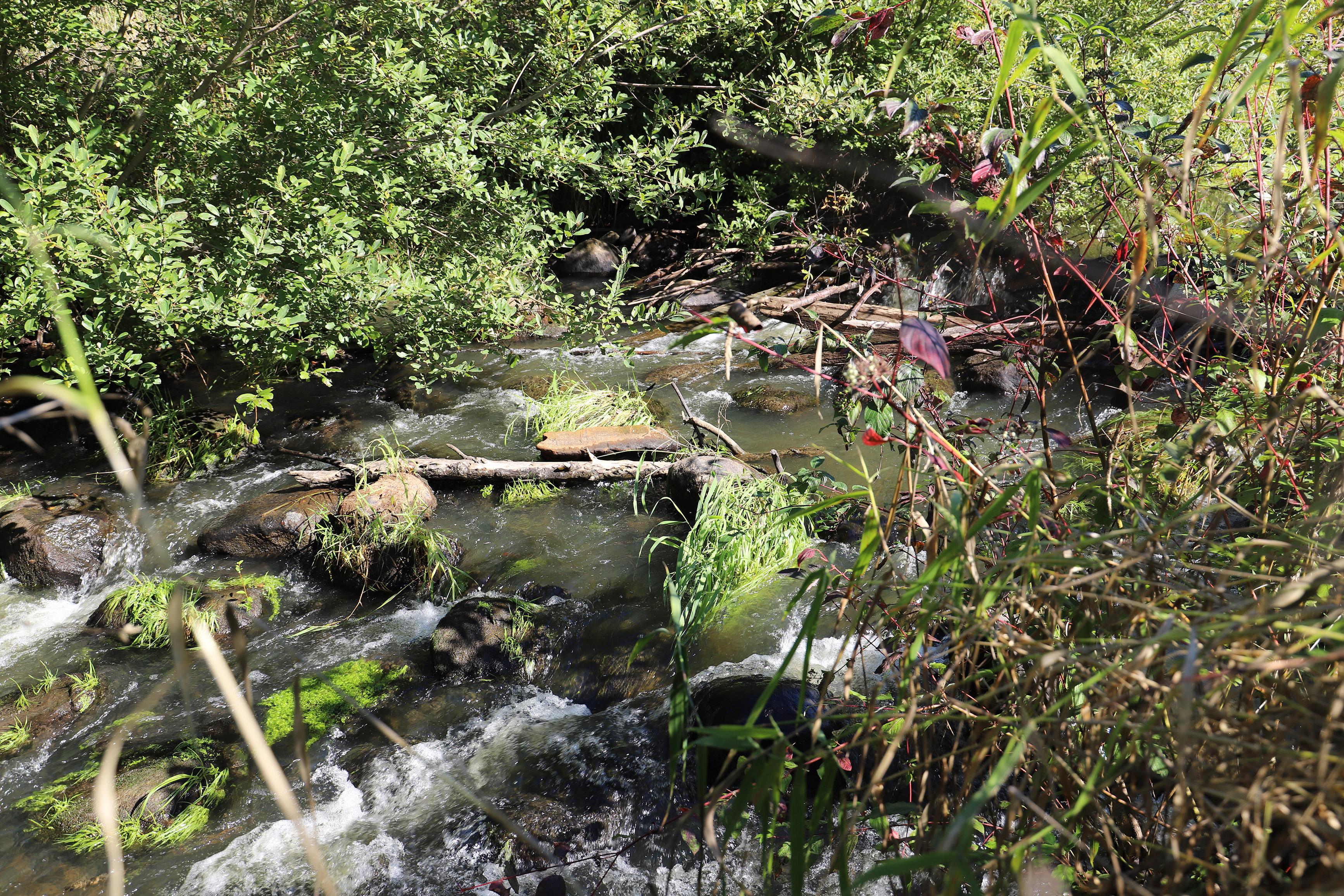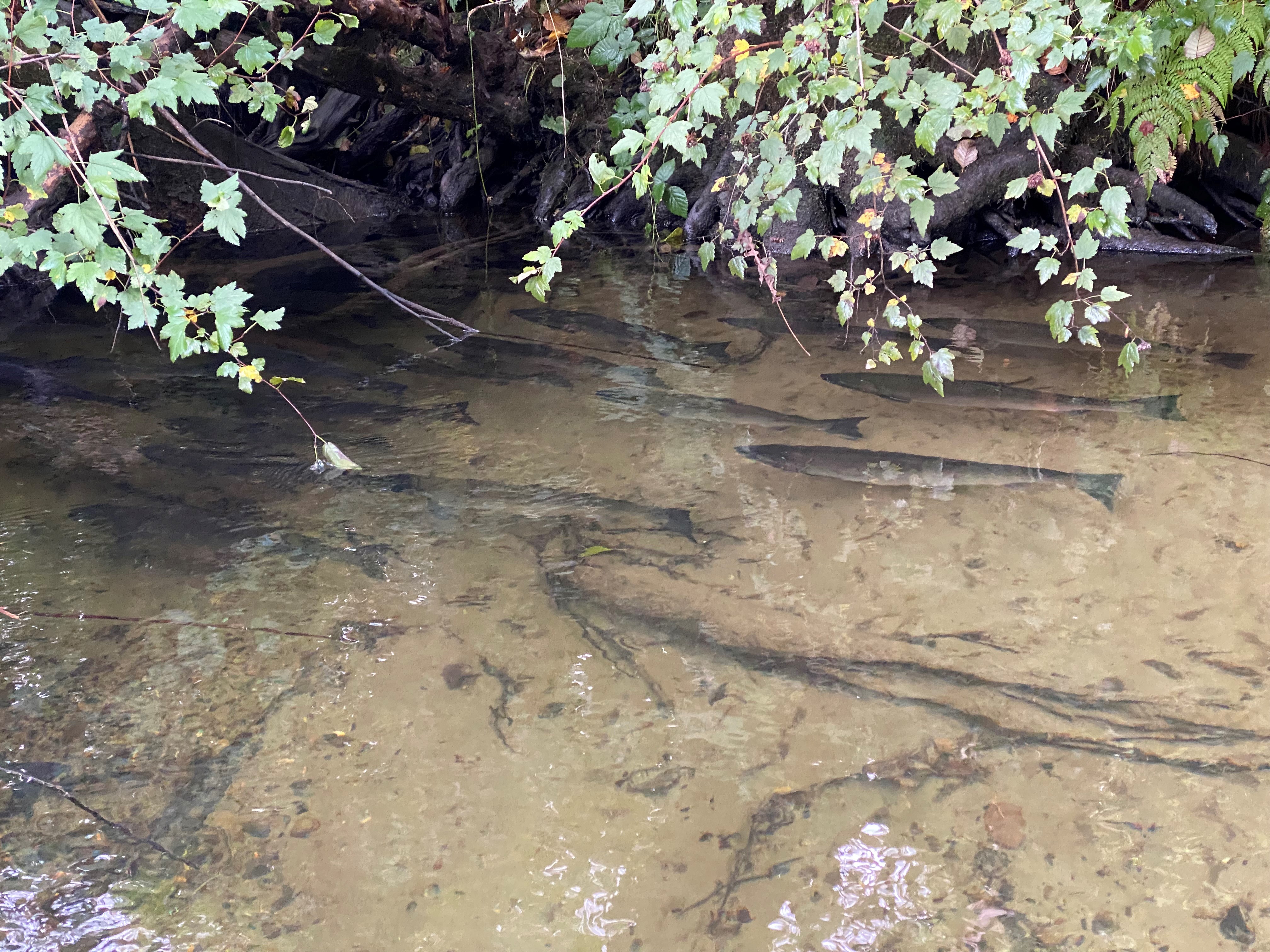
Ohop Creek is an important spawning habitat for Chinook salmon. Photo by NOAA.
For almost 20 years, the Nisqually Land Trust has been steadily improving habitat in and around Ohop Creek – one of the largest stream-restoration projects in the state. The project is also a great example of a successful community collaboration between the Nisqually Land Trust, the Nisqually Indian Tribe, several non-profit organizations, landowners and volunteers. The Ohop Creek restoration is one of 37 state wide projects we have funded through our competitive streamflow restoration grants program. Funding for these grants was authorized by the state legislature in 2018 to help public entities improve rivers and habitat throughout Washington.
Then and now
Upper Ohop Creek is a deep, narrow channel and part of the Nisqually Land Trust’s next phase of restoration.
Historically, Ohop Creek was fairly shallow and meandered through Ohop Valley. The valley was a densely forested wetland covered in shrubs and small trees. The creek was, and is, a key salmon producing tributary of the Nisqually River. Indigenous people living here were active stewards of the creek and forest.
When early settlers arrived, they dramatically transformed the land by removing vegetation and converting the wetland into farms and pastures. They re-routed the upper portion of the creek and re-channeled the lower creek into a deep, narrow ditch. The loss of trees and narrower creek greatly reduced habitat for salmon because salmon rely on wide gravel bottom, fallen logs, and shade from trees. Today, the Nisqually Land Trust works to restore the narrow channel to a wider, shallower stream that Ohop Creek used to be.
Going with the flow
Restored portion of lower Ohop Creek is now wider and has logs, rocks, and gravel habitat for spawning salmon.
Restoring habitat and re-shaping Ohop Creek requires a great deal of planning and patience. Biologists, engineers and technical experts have widened the stream, improved water flow and added structures like logs and rocks to create habitat for salmon. At the same time, the creek has adapted to natural events such as, rainfall and flooding. As the creek shifts and re-shapes itself, the Nisqually Land Trust and partner organizations modify restoration efforts to fit the needs of the changing creek.
“It took time to get to where we are and it will take time to restore this habitat. A landscape-scale project needs a cooperative approach. It takes time for people to figure out how we are working together, securing resources, and putting all the pieces together," said Jeanette Dorner, Executive Director of the Nisqually Land Trust. "If we are serious about healing rivers and recovering salmon, this is the kind of work we have to do to create a long-lasting effect. We have made significant progress to transform Ohop Valley."
Collaboration is key
Restoring Ohop Creek is possible through partnerships in the community. The Nisqually Land Trust collaborates with landowners and local partner organizations to purchase land and restore the creek and its flood plain. This work will help support healthy populations of salmon. The land trust and community members work together to clear invasive plants and plant native trees.
“People think of the natural environment as something that exists by itself, without human stewardship. We need to remember that Indigenous people have been stewarding this place for thousands of years," Dorner said. "They are active stewards of the streams and forests. People are not passively living here – it will always take active stewardship to keep this habitat healthy."
Bringing back salmon through restoration and management
Salmon rely on overhanging branches from trees as leaves provide shade and help cool water temperature.
Restoring forests and streams helps salmon. The recently planted trees and shrubs along Ohop Creek provide much needed shade – cooling the water and protecting salmon. Additionally, adding structures like rocks and logs creates habitat for salmon. Adult salmon now have a place to spawn and young salmon have safe places to grow and thrive.
“Today we are re-thinking what managing this land means in a way that supports people living here and supports fish and wildlife that have been here for thousands of years,” Dorner said. “It's important to understand that people are a part of the ecosystem, not separate from it. We need to be intentional about management decisions so we continue to have these special places for future generations.”
This work would not have been possible without the community. The Nisqually Land Trust, the Nisqually Indian Tribe, several non-profit organizations and volunteers continue to work together to protect Ohop Creek for future generations of salmon and people. Learn more about the Nisqually Land Trust and how you can get involved in habitat restoration.
Ecology’s Streamflow Restoration competitive grants
Since 2019, we have awarded about $5.3 million to the Nisqually Land Trust through Water Resources Streamflow restoration grants. The funding supports projects that restore habitat for salmon in the Nisqually River Basin, which includes Ohop Creek.
Our streamflow restoration competitive grants fund projects that improve rivers, streams, and restore watersheds in Washington. We support the work of state and local agencies, Tribal governments, and non-profit organizations throughout the state. Our next grant round opens today and closes at 5 p.m. Feb. 1, 2022.




